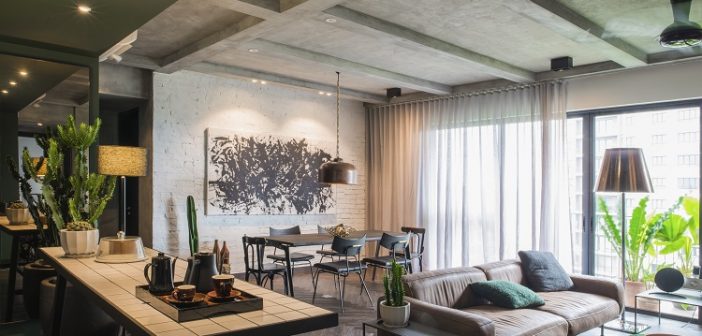Are you looking to revamp your flooring?
We’ve all heard of features that make a statement in our homes. You may not know that your flooring can make as big an impact to your guests. But with so many different types, it can be difficult to choose.
Don’t worry! Read on for our guide to the most durable and beautiful types of flooring for homes on the market.
Hardwood
Solid, hardwood flooring has remained at the top of the popularity charts for decades. Its construction is as simple as they come. You install wooden boards/planks by nailing them to a wooden underfloor.
You can find a variety of wood kinds, from domestic to exotic.
Some domestic types include:
- Red Oak
- White Oak
- Hickory
- Maple
And some exotics are:
- Brazilian Teak
- Santos Mahogany
- Tiete Rosewood
- Tigerwood
Usually, solid hardwood flooring will come in strips or planks. Strips will have a width ranging from 1.5-2.5 inches. For planks, the width range is between 4-8 inches wide.
Advantages
Hardwood flooring looks great with any style of interior decor. From old-style plantation to minimalist modern. It’s long-lasting and you can refinish it up to 5 times to remove any scratches. Real-estate experts say adding hardwood floors also adds to your home’s value.
Disadvantages
The biggest disadvantage is they’re not too good with rough handling. If exposed to moisture for a long period of time, they can bend and warp. They’re also easy to scratch and dent. You will need to have them refinished around every 10 years to keep them in top condition.
Engineered Wood
Engineered wood will look like solid wood, but it’s got a thin layer of natural wood on top. This shows the grain, but there are layers of plywood underneath.
Engineered flooring comes in a variety of wood types, widths, and patterns. Like hardwoods, you can nail it down, or you can glue it. It can also be a “floating floor” — where it’s installed on a layer of cork or foam.
Advantages
Engineered wood gives you that timeless, classic look of hardwood but at a fraction of the price. The layers of plywood also make it sturdier than hardwood. It’s less sensitive to humidity and temperature changes too.
Disadvantages
As with hardwood, engineered is susceptible to denting and scratching. In the long run, it is a little less durable than hardwood too. You can only refinish it between 1-3 times.
Floor Tile
Tiles are made from kiln fired shale and clay. It’s a hard, solid material and you can get it in an almost limitless selection of shapes, patterns, and colors.
There are 3 main types of floor tiles. These are:
- Porcelain — Extra durable, hard and stain resistant. You can get it glazed or unglazed.
- Quarry — Unglazed and rough in texture, it’s slip-resistant, unlike glazed tiles.
- Terracotta — Less hardwearing and needs sealing on a regular basis. Earth tones only.
Advantages
The sheer variety of floor tiles means you’re sure to find the perfect fit for your decor. Modern printing technology allows us to print pretty much any pattern too. It’s a very versatile choice when styling your home.
Disadvantages
Underfoot, tiles can be uncomfortable, hard, and cold. It’ll also carry the sound of footsteps further and louder.
Durability will vary from the type you choose as well. Some are low maintenance, while others need a more hands-on approach. If you crack one it’s not an easy fix. It’s advisable to keep a box of spares.
Laminate
Laminate consists of a veneer on top of compressed fiber or plywood layers. They print the top layer beneath a plastic coating. As it’s printed, it can have a tile, stone or wood finish.
You can get laminate in either plank or tile form. Most work on the floating floor system. You can place this over any existing floor without nails or glue.
Advantages
Whatever style you want, you can find a laminate to mimic it at much less cost. Maintenance is easy and infrequent.
Disadvantages
Laminate, when wet can be slippery much like tile. If left in standing water, it can seep through the layers and cause warping.
Unlike real and engineered wood, you can’t refinish laminate when worn. You’ll have to replace it.
Vinyl
Vinyl is very resilient and comes from a layer of plastic placed over felt layers. Cushioned vinyl will have a thin foam layer between the PVC and felt to make it more comfortable. Thicker kinds can have textured surfaces. It can even look like stone or wood.
Vinyl comes in many different types such as sheet which you roll out and click-style which you glue them down one piece at a time.
Advantages
Vinyl is tough, it’ll stand up to heavy traffic and prolonged moisture. It’s warmer and comfier to walk over.
It doesn’t come with a high price tag, and a good vinyl floor will last you over 20 years. You can also get a variety of color options too to suit the style of your home.
Disadvantages
You’ll find vinyl flooring varies in its quality. For the cheaper types, you’ll get less color and pattern choice. And they’ll come with a faded look. If you’re installing it on an underfloor with no underlayer, it can sound hollow.
Carpet
Carpet is made of soft fibers woven into a backing. You need to install it over padding, nailing it down. This padding adds cushioning to it and prolongs its lifespan.
You can get carpet in a variety of textures, materials, and colors:
- Wool — Durable, it has natural resistance to staining and moisture.
- Nylon — Strong and resistant to wear it’s a synthetic material that has a long lifespan.
- Polyester — Moisture resistant it’s a synthetic material that takes well to dyes.
- Acrylic — Another synthetic, it’s resistant to insects, crushing, and mildew.
Advantages
Carpet is warm underfoot, which is great for colder climes. It’s easy to install and slip-resistant. If well cared for, it has a long lifespan too.
Disadvantages
Carpet takes more involvement to keep clean than other types of flooring. You’ll need to vacuum on a regular basis, and it holds dirt. It’ll need to be steam cleaned. Carpet also suffers from staining.
Types of Flooring For Homes You Don’t Want to Miss Out On
So there you have it! Don’t miss out on these wonderful types of flooring for homes.
There is no such thing as the perfect flooring, they all have their pros and cons. The key is to consider the purpose of the room and what you want from your flooring. By considering where your flooring is going, you’ll be sure to find the right fit for your needs.
If you found this article useful, check out our other blog posts.





These are the best interior decor tips for homes. To make a statement these rectangular pillows are great addition to your living room.
These are some of the useful flooring tips given for home. Some residential cleaning services are best to do the job at your place. It transforms your whole home experience.